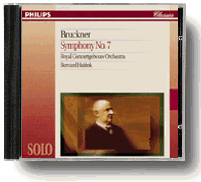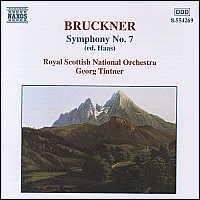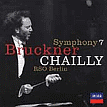


When Richard Wagner died in 1883, the news of his death hovered over the entire Vienna like an impenetrable fog. No one, be him from the pro- or anti-Wagnerian camp was unaffected by it, but especially Bruckner who was then working on his Seventh Symphony. Just before the death of Wagner, Bruckner wrote a letter to Felix Mottl, and he disclosed the fateful premonition he had received: "I felt very sad. For the thought of the Master would soon die had occurred to me, and at that moment the C sharp minor theme of the Adagio came to me." The Seventh Symphony was completed later that year. Fearing the Viennese hostility which, led by Hanslick and Hugo Wolf, had brought him low in the past, Bruckner took his symphony for its premiere to Leipzig, where it was conducted on December 30, 1884, by the admiring Nikisch: "Since Beethoven there has nothing to approach it." Approached by the Vienna Philharmonic after this triumphant performance, the applause lasted for a quarter of an hour. After a lifetime of struggle, Bruckner found himself at a celebrity at the age of sixty. Caught up in the furious sniping surrounding his adored Wagner, Bruckner had often suffered unjustly for his admiration. How satisfying that he triumphed at last with a work so closely connected to Wagner’s passing! Bruckner’s characteristic control of gigantic forces is everywhere apparent in the Seventh Symphony. It is this desire to create and skillfully wield titanic structures that brings him close in spirit to Beethoven and Wagner.

 Bernard Haitink
Bernard Haitink 


In his later version, Haitink and his Concertgebouw Orchestra give a totally committed and finely shaped performance of the Seventh Symphony. Haitink maintains a firm hold over the architecture of the piece and produces playing of great poetic feeling. With idiomatic insights, there is no feeling of rigidity, and the beauty of the slow movement purified. The playing of the Concertgebouw Orchestra is extraordinary impressive, particularly the ardor of the strings. The recording has glittery detail and expands brilliantly at the climax in the slow movement.

 Otto Klemperer
Otto Klemperer 


Otto Klemperer offers a strong yet beautifully shaped performance, with plenty of panache and an acute feeling for atmospheric color. Speeds are very well chosen, and the expressive detail is consistently made to sound natural. The Philharmonic strings in Walter Legge’s exemplary excel themselves in depth of utterance. Here, Klemperer’s command of Brucknerian counterpoint is complete.

 Georg Tintner
Georg Tintner


Tintner uses the Haas edition of the score, and he rightly eschews the cymbal crash at the climax of the Adagio. The glow of the Brucknerian sound is beautifully caught, with the full nobility of the slow movement brought out. With outstanding help from the Scottish National Orchestra, particularly its resplendent brass section, Tintner creates a living, breathing tissue of sound across all four movements of the symphony, making a statement as gentle, noble, and radiant as the music itself. The recording is top-notch, and there are excellent notes by Tintner himself that shed welcome light on the music as well as the interpreter.

 Herbert Von Karajan
Herbert Von Karajan


Karajan’s digital recording of the Seventh Symphony with the Vienna Philharmonic may not have the special sense of mystery in his EMI version. However, this is still a great performance. It is Karajan's compelling architectural farsightedness that "glues" and holds the sonic blocks together which provides the remedy, though some might find his pacing somewhat deliberate. When Karajan made this recording in April 1989, he had less than three months to live (he died on July 16 that year). So this performance is not only an important historical document, but also a final testament and a tribute to the art of Karajan, the conductor and the man.

 Riccardo Chailly
Riccardo Chailly 


Although Chailly takes what people might consider as a traditional approach, he brings an appropriate elegance and also possesses considerable command of the architecture. Chailly outshines others in the pacing and phrasing of the beautiful slow movement which in its natural flowing rubato has melting tenderness behind passion. The playing has elegance and an attractive rhythmic lightness and point. There is no lack of drama or feeling, and it is a performance full of stylishness and warmth. The Decca digital recording is outstanding in every way.

Other Recommendations:
Welser-Möst

